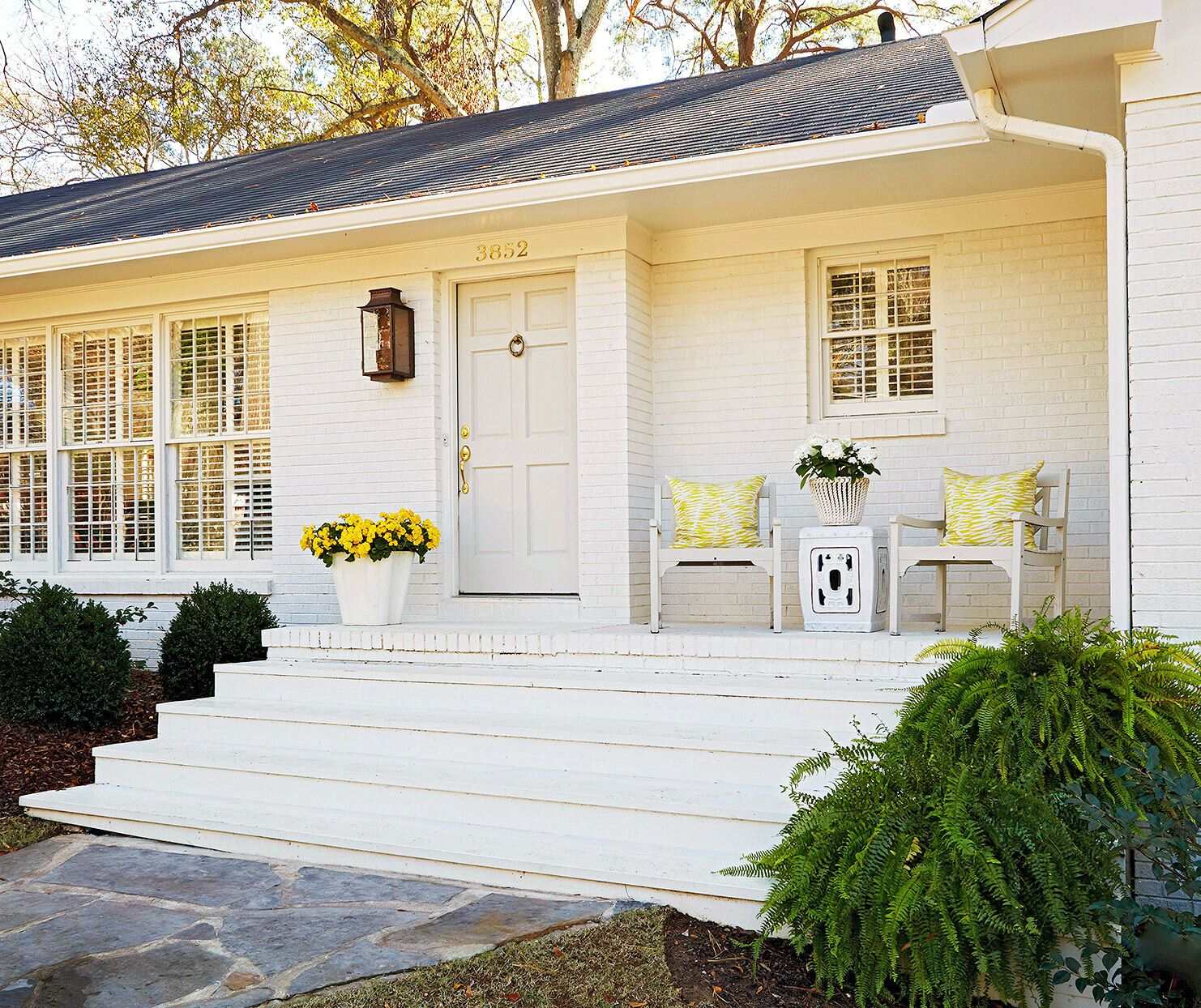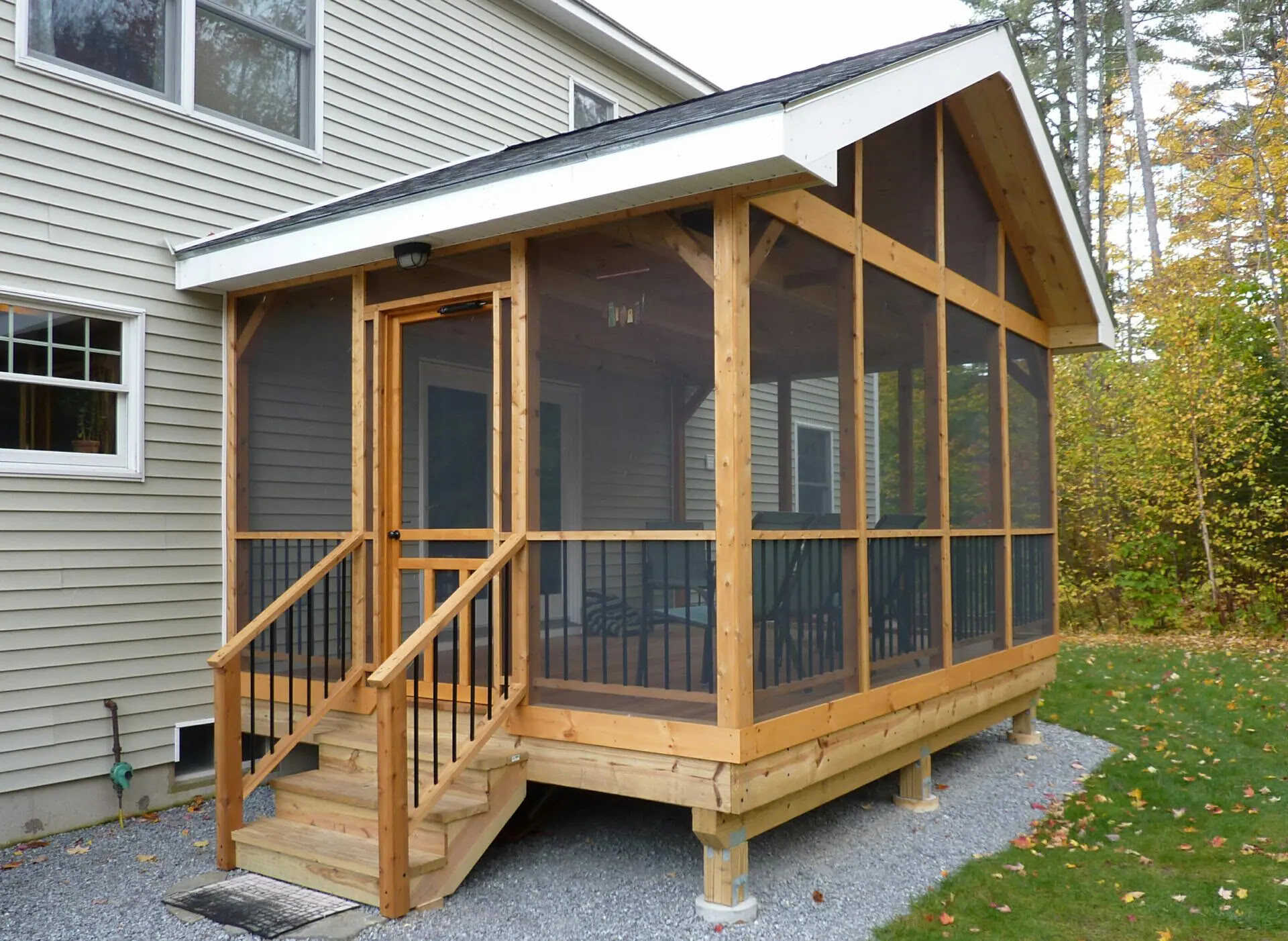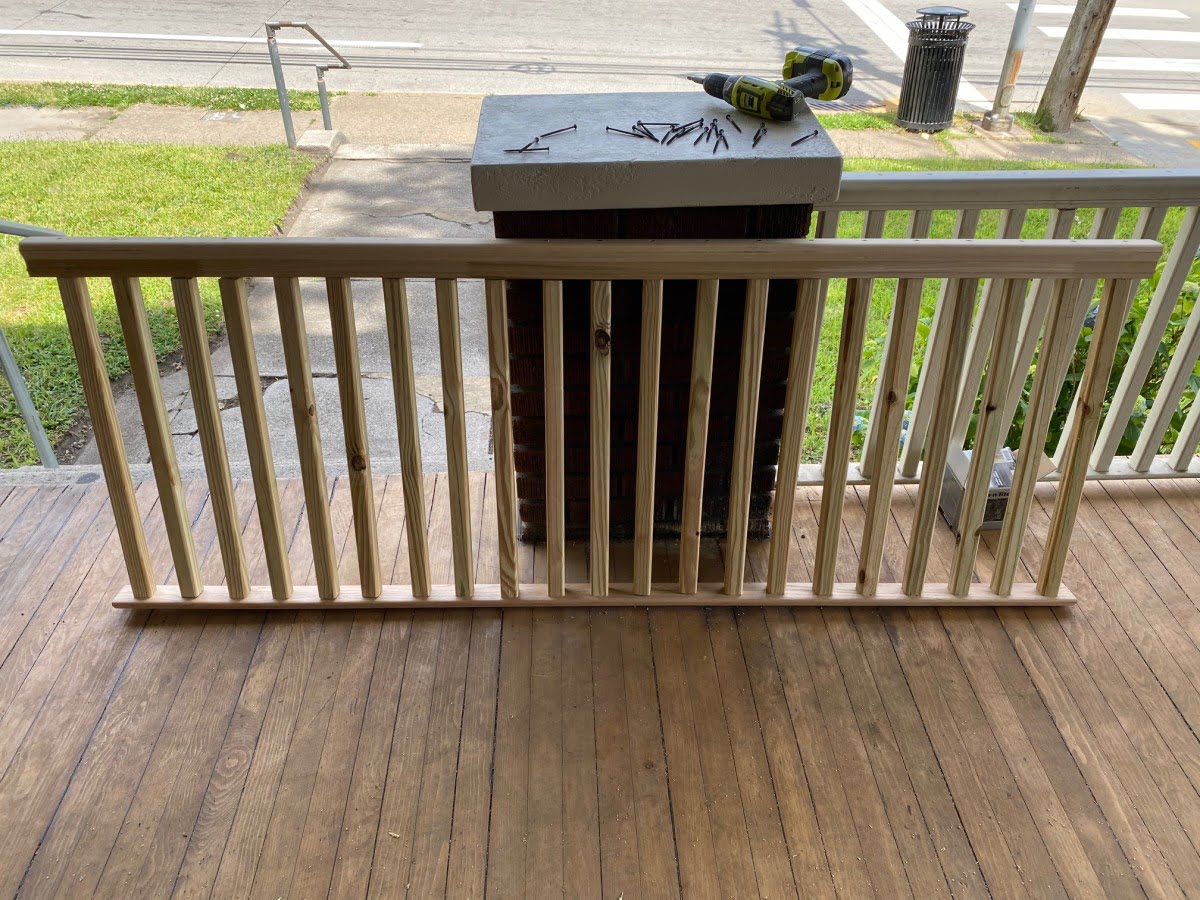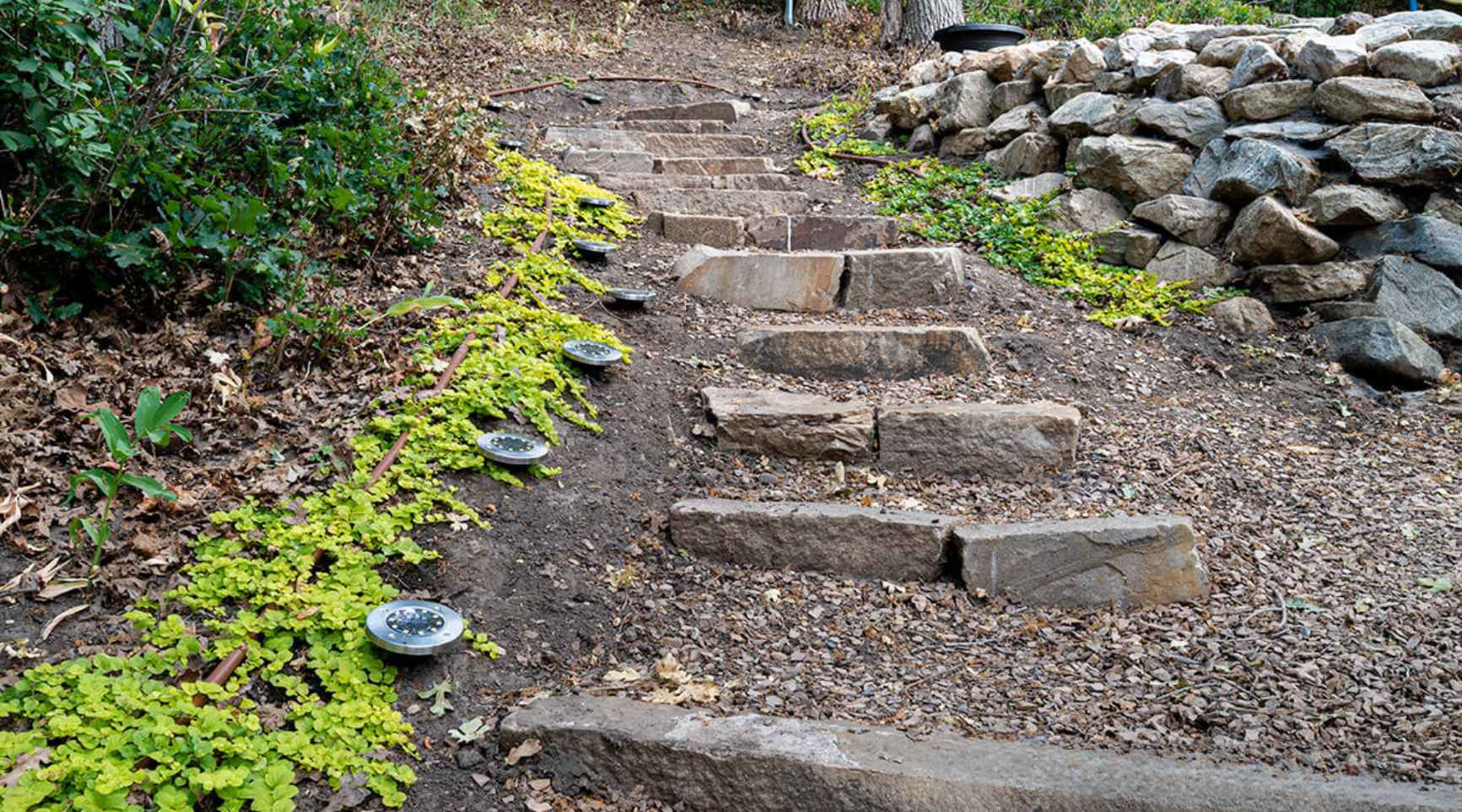

Articles
How To Build Porch Steps
Modified: March 1, 2024
Learn how to build porch steps with our informative articles. Expert tips and step-by-step instructions for a sturdy and beautiful porch staircase.
(Many of the links in this article redirect to a specific reviewed product. Your purchase of these products through affiliate links helps to generate commission for Storables.com, at no extra cost. Learn more)
Introduction
Building porch steps can be a rewarding and practical DIY project that enhances the aesthetic appeal and functionality of your home. Porch steps not only provide a safe and convenient way to enter and exit your porch, but they also add charm and character to your outdoor space. Whether you’re replacing old, worn-out steps or building new ones from scratch, this comprehensive guide will walk you through the step-by-step process of building porch steps.
Before embarking on this project, it’s important to gather all the necessary materials and tools. This will ensure that you have everything you need at hand and minimize any delays or last-minute trips to the hardware store. Additionally, taking accurate measurements and preparing the area where the steps will be installed is crucial for a successful outcome.
Designing and planning the porch steps is the next step in the process. Consider the style and architecture of your home, as well as your personal preferences, when deciding on the design and materials for your steps. This will help you create a cohesive and visually appealing look that complements the overall aesthetic of your home.
Once the design is finalized, it’s time to cut and assemble the steps. Depending on the chosen materials, this may involve cutting and shaping the boards, attaching them to a frame, and ensuring proper alignment and stability. Following the assembly, the steps will need to be installed onto the porch, taking into account the rise and run measurements to ensure a comfortable and safe climb.
To ensure the steps are secure and stable, it’s important to properly anchor and fasten them to the porch structure. This will prevent any wobbling or shifting over time, ensuring the safety of anyone using the steps. Additionally, adding finishing touches such as sanding, staining, or painting the steps will not only enhance their appearance but also protect them from weather elements and wear.
Maintaining the porch steps is also an important aspect to consider. Regular cleaning, inspection, and maintenance will prolong the lifespan of your steps and ensure their continued functionality and safety.
By following these step-by-step instructions and taking the necessary precautions, you can build porch steps that are not only functional but also enhance the overall look and usability of your porch. So gather your materials, grab your tools, and embark on this exciting home improvement project!
Key Takeaways:
- Building porch steps involves gathering materials, precise measurement, and careful installation. Consider safety, design, and maintenance to create functional and visually appealing steps that enhance your home’s exterior.
- Properly securing porch steps and adding finishing touches such as lighting and regular maintenance are essential for ensuring durability and safety. Embrace the DIY project to create a welcoming and practical outdoor space.
Read more: How To Build Stone Porch Steps
Step 1: Gather Materials and Tools
Gathering all the necessary materials and tools is the first crucial step in building porch steps. Having everything you need at hand will ensure a smooth and uninterrupted construction process. Here are the materials and tools you will need:
Materials:
- Pressure-treated lumber or composite boards for the step treads
- Pressure-treated lumber or composite boards for the step risers
- 2×4 or 2×6 lumber for the step frames
- Concrete or deck blocks for the foundation
- Galvanized screws or nails
- Construction adhesive
- Gravel
- Sand or gravel for leveling
Tools:
- Tape measure
- Pencil
- Circular saw or miter saw
- Jigsaw (if making curved or decorative steps)
- Screwdriver or drill
- Hammer or nail gun
- Level
- Trowel
- Shovel
- Broom
- Safety equipment (gloves, safety glasses, dust mask)
When selecting the materials, opt for pressure-treated lumber or composite boards that are specifically designed for outdoor use. These materials are more resistant to moisture, decay, and insect damage, ensuring the longevity of your porch steps. The size and quantity of materials will depend on the measurements of your porch and the desired number and size of steps.
Before purchasing the materials, measure the area where the steps will be installed and calculate the number of step treads and risers needed. Take into account the desired rise and run of each step to ensure a comfortable and safe climb. Additionally, make sure to check local building codes and regulations for any specific requirements or restrictions.
Having the necessary tools readily available will save you time and frustration during the construction process. Ensure that your tools are in good working condition and that you have the appropriate safety equipment to protect yourself.
Once you have gathered all the materials and tools, you are ready to move on to the next step: measuring and preparing the area where the steps will be installed.
Step 2: Measure and Prepare the Area
Before diving into the construction of your porch steps, it’s essential to accurately measure and prepare the area where the steps will be installed. This step ensures that the steps fit properly and are aligned with the porch, providing a safe and seamless transition. Here’s how to measure and prepare the area:
Read more: How To Build A Concrete Porch With Steps
1. Measure the Area:
Using a tape measure, carefully measure the width and length of the porch where the steps will be placed. Consider any existing features such as railings or columns when determining the overall dimensions of the steps. Additionally, measure the vertical rise from the ground to the porch level to determine the number of steps needed.
2. Clear the Area:
Clear the area of any obstacles such as rocks, plants, or debris. Ensure that the ground is level and stable to provide a solid foundation for the steps. Remove any old or existing steps, if necessary, to make way for the new construction.
3. Mark the Layout:
Using a pencil or marking tool, mark the layout of the steps on the ground. Start by marking the position of the first and last step, ensuring they are aligned with the porch. Then, mark the positions of the intermediate steps based on the desired rise and run measurements.
4. Prepare the Foundation:
If you are using concrete blocks to support the steps, dig holes at the marked positions for the block footings. Ensure that the holes are deep enough to accommodate the frost line and provide stability. If you are using deck blocks, level the ground and place the blocks at the marked positions.
Read more: How To Build Front Porch Steps
5. Level the Ground:
Use a shovel and a level to ensure that the ground is level and even where the steps will be installed. This will prevent any unevenness or rocking of the steps once they are constructed.
By diligently measuring and preparing the area, you can ensure that your porch steps will fit seamlessly into the space, providing a safe and sturdy structure. With the area properly prepared, you’re now ready to move on to the next step: designing and planning the porch steps.
Step 3: Design and Plan the Porch Steps
Designing and planning the porch steps is a crucial step in the construction process, as it sets the foundation for the overall look and functionality of your steps. Consider the style and architecture of your home, as well as your personal preferences, when designing and planning the steps. Here’s how to design and plan your porch steps:
1. Determine the Style:
Consider the architectural style of your home and the desired aesthetic when choosing the style of your porch steps. Whether you prefer a traditional, modern, rustic, or contemporary look, there are various design options available. Take inspiration from other homes in your neighborhood or browse design websites and magazines to gather ideas.
2. Select Materials:
Choose the materials that best suit your design style and functional needs. Pressure-treated lumber is a popular and durable choice for porch steps, while composite boards offer low maintenance and a wide range of color options. Consider the pros and cons of each material, as well as your budget, when making your selection.
Read more: How To Fix Porch Steps
3. Decide on Step Configuration:
Determine whether you want straight steps or if you prefer a more decorative configuration, such as curved or angled steps. Consider the available space, the architectural features of your home, and your personal preference when deciding on the step configuration.
4. Consider Safety:
Keep safety in mind when designing your porch steps. Ensure that the rise and run measurements comply with local building codes to provide a comfortable and safe climb. Incorporate handrails if needed, especially for taller or wider steps, to provide additional support and safety.
5. Sketch the Design:
Using a pencil and paper or design software, sketch out the layout and design of your porch steps. Include dimensions, materials, and any decorative elements you want to incorporate. This will serve as a visual guide throughout the construction process.
6. Plan the Finishing Touches:
Consider any additional finishing touches you want to incorporate into your steps, such as post caps, riser lights, or decorative accents. Plan ahead to ensure that these elements are properly integrated into the design and can be easily installed during the construction process.
By taking the time to design and plan your porch steps, you can create a beautiful and functional set of stairs that complements your home’s architecture and personal style. Once you have finalized the design, you’re now ready to move on to the next step: cutting and assembling the steps.
Read more: How To Build An Angled Deck Step-by-Step
Step 4: Cut and Assemble the Steps
Once you have designed and planned your porch steps, it’s time to bring your vision to life by cutting and assembling the steps. This step requires careful measurement, precise cutting, and proper assembly techniques to ensure sturdy and functional steps. Here’s how to cut and assemble the steps:
1. Measure and Cut the Step Treads:
Using the measurements from your design plan, measure and mark the dimensions on the chosen materials for the step treads. Use a circular saw or miter saw to make precise cuts along the marked lines. Ensure that each step tread is cut to the same size and that the edges are smooth and even.
2. Measure and Cut the Step Risers:
Measure and cut the step risers using the same techniques as for the step treads. The risers should be cut to the desired height, taking into account the rise measurement from your design plan. Again, ensure that each riser is cut to the same size and that the edges are clean.
3. Cut and Construct the Step Frames:
If your design includes step frames or supports, cut the pieces of lumber to the desired lengths and angles. Use a circular saw or miter saw to make precise cuts, and ensure that the frame pieces are straight and level. Lay out the frame pieces according to your design plan and use galvanized screws or nails to secure them together.
Read more: How To Build Porch
4. Attach the Step Treads and Risers:
Using galvanized screws or nails, attach the step treads to the step frames. Ensure that each tread is properly aligned and securely fastened to the frame to prevent any movement or instability. Then, attach the step risers to the frame, making sure they are flush against the back of the treads.
5. Check for Level and Stability:
Use a level to ensure that the steps are level from front to back and side to side. Make any necessary adjustments before proceeding to the installation step. Test the stability of the steps by applying gentle pressure, ensuring that they do not wobble or shift under weight.
By carefully measuring, cutting, and assembling the steps, you will create a solid and secure set of porch stairs. With your steps fully constructed, it’s time to move on to the next step: installing the steps to the porch.
Step 5: Install the Steps to the Porch
With the porch steps fully cut and assembled, it’s now time to install them onto the porch itself. Proper installation is crucial to ensure stability, safety, and longevity of the steps. Here’s how to install the steps to the porch:
1. Position the Steps:
Place the steps at the desired location on the porch, aligning them with the markings from your design plan. Make sure they are centered and level, and leave an appropriate gap between the steps and any existing structures or railings.
Read more: How To Build Brick Steps
2. Attach Mounting Brackets:
If your porch has a wooden framing underneath, use mounting brackets to secure the steps in place. Position the brackets under the step frames and use galvanized screws or nails to attach them to the porch framing. Ensure that the brackets are level and securely fastened to provide stability.
3. Secure with Adhesive:
If your porch is made of concrete or another non-wood material, use construction adhesive to secure the steps in place. Apply a generous amount of adhesive to the bottom of the step frame and press firmly onto the porch surface. Allow adequate drying time as per the manufacturer’s instructions.
4. Check for Level and Stability:
Use a level to ensure that the steps are level from front to back and side to side. Make any necessary adjustments to achieve proper alignment and stability. Test the steps by applying gentle pressure, ensuring that they do not wobble or shift.
5. Recheck Measurements:
Double-check the rise and run measurements of each step to ensure they comply with local building codes and provide a comfortable climbing experience. Make any necessary adjustments to the height or depth of the steps, if needed.
By carefully installing the steps to the porch, you can ensure a secure and sturdy structure that will withstand regular use and weather conditions. Once the steps are securely in place, it’s time to move on to the next step: securing the steps in place.
Read more: How To Build An Outdoor Step
Step 6: Secure the Steps in Place
Securing the steps in place is a crucial step in the construction process, as it ensures the stability and safety of the structure. Properly securing the steps will prevent any movement or shifting over time, providing a reliable and durable set of porch stairs. Here’s how to secure the steps in place:
1. Reinforce with Brackets:
If you haven’t already done so during the installation step, reinforce the steps with brackets. Attach metal brackets to the underside of the steps, securing them to the porch framing or supporting structure. Use galvanized screws or nails to securely fasten the brackets, ensuring maximum stability.
2. Add Support Legs:
If your steps are wider or longer, consider adding extra support legs to improve stability. Measure and cut additional pieces of lumber to the desired length, angling them to match the slope of the steps. Attach these support legs to the back of the step frames using galvanized screws or nails.
3. Install Stair Stringers:
If your porch steps have a more complex design or a higher number of steps, you may need to install stair stringers for additional support. These are diagonal supports that connect the steps to the porch structure. Measure, cut, and attach the stair stringers to the step frames using galvanized screws or nails.
4. Use Construction Adhesive:
In addition to brackets and supports, apply construction adhesive to reinforce the connection between the steps and the porch structure. Apply the adhesive to the contact surfaces and firmly press the steps against the porch, ensuring a strong bond. Allow adequate drying time as per the manufacturer’s instructions.
5. Test for Stability:
Once the steps are secured in place, test their stability by applying pressure and walking up and down the stairs. Check for any movement, wobbling, or shifting. If any issues are detected, reinforce the steps further by adding additional brackets or supports where needed.
By properly securing the steps in place, you can ensure a secure and stable structure that will withstand regular use and provide a safe climbing experience. With the steps securely in place, it’s time to move on to the final step: adding the finishing touches and performing maintenance.
Step 7: Finishing Touches and Maintenance
Adding the finishing touches to your porch steps not only enhances their appearance but also helps protect them from the elements and regular wear and tear. Additionally, performing regular maintenance will ensure their longevity and continued functionality. Here’s how to add the finishing touches and maintain your porch steps:
1. Sand and Finish:
If you’re using wood materials for your steps, sand the surfaces to achieve a smooth and splinter-free finish. Remove any rough edges or imperfections. Apply a sealant, stain, or paint to protect the wood from moisture, UV rays, and pests. Follow the manufacturer’s instructions for proper application and drying time.
Read more: How To Build A Step On A Patio
2. Install Riser Lights or Accent Features:
To enhance the aesthetic appeal of your porch steps, consider installing riser lights or accent features. These can provide additional lighting at night and create a welcoming ambiance. Follow the manufacturer’s instructions for installation and wiring, ensuring safety and adherence to local regulations.
3. Clean Regularly:
Regularly clean your porch steps to prevent the buildup of dirt, debris, and mold. Sweep or use a leaf blower to remove loose dirt and leaves. Use a mild detergent and water to scrub away any stains or grime. Rinse thoroughly with water and let the steps dry completely before use.
4. Inspect for Damage:
Periodically inspect your porch steps for any signs of damage, including cracks, rot, or loose parts. Promptly repair or replace any damaged components to maintain the stability and safety of the steps. Regular inspections can help identify issues early on and prevent further damage.
5. Perform Repairs:
If you notice any loose boards, nails, or screws, reattach or replace them as needed. Tighten any loose brackets or supports. Fill any cracks with wood filler or appropriate sealant. Maintain the overall integrity of your steps by addressing any repairs promptly.
Read more: How To Build Landscaping Steps
6. Winterize:
If you live in an area with harsh winters, take steps to protect your porch steps. Clear snow and ice promptly to prevent damage and ensure safe use. Consider using non-slip stair treads or covers to provide additional traction during icy conditions.
By adding the finishing touches and performing regular maintenance, you can keep your porch steps looking their best and ensure their long-term durability. Enjoy the beauty and functionality of your newly built porch steps for years to come!
Frequently Asked Questions about How To Build Porch Steps
Was this page helpful?
At Storables.com, we guarantee accurate and reliable information. Our content, validated by Expert Board Contributors, is crafted following stringent Editorial Policies. We're committed to providing you with well-researched, expert-backed insights for all your informational needs.






0 thoughts on “How To Build Porch Steps”